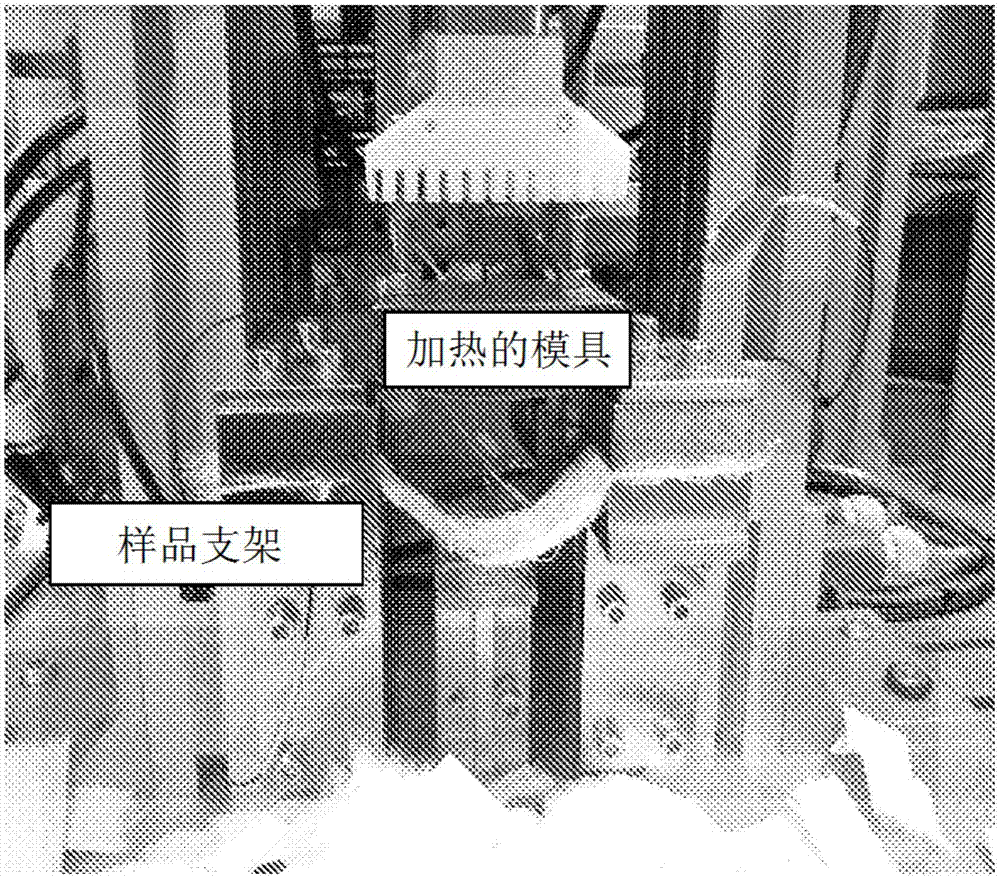Thermoplastic fibrous materials and method of producing the same
A thermoplastic fiber and fiber material technology, applied in the field of improving the elongation of thermoplastic fiber materials and manufacturing thermoplastic fiber products, can solve the problems of limited design and geometry, limited finished parts, low elongation, etc.
- Summary
- Abstract
- Description
- Claims
- Application Information
AI Technical Summary
Problems solved by technology
Method used
Image
Examples
Embodiment 1
[0106] Example 1 Fracture strain
[0107] sheet preparation
[0108] Sheets of thermoplastic fiber material are produced by foam forming methods and dried on plates at room temperature under constrained conditions. Viscose fibers of various lengths and unground bleached pine pulp are used as fiber raw materials. Polyurethane (PU) dispersions are used as thermoplastic additives. The fiber-containing dispersion is mixed with the thermoplastic polymer dispersion. Thus, all raw materials were mixed together, then the suspension was poured on a screen and the water was removed by means of vacuum. The basis weight of the dry sheet is 240g / m 2 up to 350g / m 2 change between.
[0109] Performance Characterization
[0110] The fracture strain values of the prepared sheets were measured. Measurements were performed using a setup in which a heated die with a curved surface was pressed against the attached sample slide and the elongation at break value was recorded. Measurem...
Embodiment 2
[0115] Embodiment 2 Thermoforming
[0116] sheet preparation
[0117] Sheets of thermoplastic fiber material were prepared as in Example 1. The raw materials used are viscose and PU.
[0118] Performance Characterization
[0119] The effect of fiber length on the elongation properties of the prepared materials was evaluated by laboratory scale thermoforming. The sample is attached to the mold placed between the platens. The temperature during forming was 100° C. and the mold depth was 3 cm.
[0120] result
[0121] The thermoforming results are shown in the figure. Increasing the length of the viscose fibers clearly improved the results.
[0122] figure 2 Thermoformed samples are shown, prepared from viscose and PU: 6 mm viscose + PU (left) and 12 mm viscose + PU (right). The basis weight of the sample is about 240g / m 2 , the amount of PU is about 7% by weight of the thermoplastic fiber material formed.
PUM
| Property | Measurement | Unit |
|---|---|---|
| length | aaaaa | aaaaa |
| width | aaaaa | aaaaa |
| length | aaaaa | aaaaa |
Abstract
Description
Claims
Application Information
 Login to View More
Login to View More - Generate Ideas
- Intellectual Property
- Life Sciences
- Materials
- Tech Scout
- Unparalleled Data Quality
- Higher Quality Content
- 60% Fewer Hallucinations
Browse by: Latest US Patents, China's latest patents, Technical Efficacy Thesaurus, Application Domain, Technology Topic, Popular Technical Reports.
© 2025 PatSnap. All rights reserved.Legal|Privacy policy|Modern Slavery Act Transparency Statement|Sitemap|About US| Contact US: help@patsnap.com



